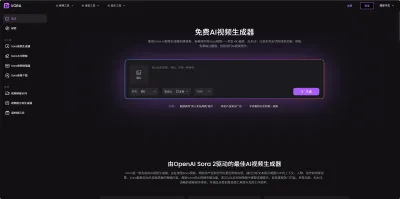OML is a PyTorch-based framework to train and validate the models producing high-quality embeddings.
Trusted by
<div align="center"> <a href="https://docs.neptune.ai/integrations/community_developed/" target="_blank"><img src="https://security.neptune.ai/api/share/b707f1e8-e287-4f01-b590-39a6fa7e9faa/logo.png" width="100"/></a>ㅤㅤ <a href="https://www.newyorker.de/" target="_blank"><img src="https://upload.wikimedia.org/wikipedia/commons/thumb/d/d8/New_Yorker.svg/1280px-New_Yorker.svg.png" width="100"/></a>ㅤㅤ <a href="https://www.epoch8.co/" target="_blank"><img src="https://i.ibb.co/GdNVTyt/Screenshot-2023-07-04-at-11-19-24.png" width="100"/></a>ㅤㅤ <a href="https://www.meituan.com" target="_blank"><img src="https://upload.wikimedia.org/wikipedia/commons/6/61/Meituan_English_Logo.png" width="100"/></a>ㅤㅤ <a href="https://constructor.io/" target="_blank"><img src="https://rethink.industries/wp-content/uploads/2022/04/constructor.io-logo.png" width="100"/></a>ㅤㅤ <a href="https://edgify.ai/" target="_blank"><img src="https://edgify.ai/wp-content/uploads/2024/04/new-edgify-logo.svg" width="100" height="30"/></a>ㅤㅤ <a href="https://inspector-cloud.ru/" target="_blank"><img src="https://thumb.tildacdn.com/tild6533-6433-4137-a266-613963373637/-/resize/540x/-/format/webp/photo.png" width="150" height="30"/></a>ㅤㅤ <a href="https://yango-tech.com/" target="_blank"><img src="https://yango-backend.sborkademo.com/media/pages/home/205f66f309-1717169752/opengr4-1200x630-crop-q85.jpg" width="100" height="30"/></a>ㅤㅤ <a href="https://www.adagrad.ai/" target="_blank"><img src="https://assets-global.website-files.com/619cafd224a31d1835ece5bd/61de7f23546e9662e51605ba_Adagrad_logo_footer-2022.png" width="100" height="30"/></a><a href="https://www.ox.ac.uk/" target="_blank"><img src="https://i.ibb.co/zhWL6tD/21-05-2019-16-08-10-6922268.png" width="120"/></a>ㅤㅤ <a href="https://www.hse.ru/en/" target="_blank"><img src="https://www.hse.ru/data/2020/11/16/1367274044/HSE_University_blue.jpg.(230x86x123).jpg" width="100"/></a>
There is a number of people from Oxford and HSE universities who have used OML in their theses. [1] [2] [3]
<div align="left"> <details> <summary><b>OML 3.0 has been released!</b></summary> <p>The update focuses on several components:
-
We added "official" texts support and the corresponding Python examples. (Note, texts support in Pipelines is not supported yet.)
-
We introduced the
RetrievalResults(RR) class — a container to store gallery items retrieved for given queries.RRprovides a unified way to visualize predictions and compute metrics (if ground truths are known). It also simplifies post-processing, where anRRobject is taken as input and anotherRR_updis produced as output. Having these two objects allows comparison retrieval results visually or by metrics. Moreover, you can easily create a chain of such post-processors.RRis memory optimized because of using batching: in other words, it doesn't store full matrix of query-gallery distances. (It doesn't make search approximate though).
-
We made
ModelandDatasetthe only classes responsible for processing modality-specific logic.Modelis responsible for interpreting its input dimensions: for example,BxCxHxWfor images orBxLxDfor sequences like texts.Datasetis responsible for preparing an item: it may useTransformsfor images orTokenizerfor texts. Functions computing metrics likecalc_retrieval_metrics_rr,RetrievalResults,PairwiseReranker, and other classes and functions are unified to work with any modality.- We added
IVisualizableDatasethaving method.visaulize()that shows a single item. If implemented,RetrievalResultsis able to show the layout of retrieved results.
- We added
Migration from OML 2.* [Python API]:
The easiest way to catch up with changes is to re-read the examples!
-
The recommended way of validation is to use
RetrievalResultsand functions likecalc_retrieval_metrics_rr,calc_fnmr_at_fmr_rr, and others. TheEmbeddingMetricsclass is kept for use with PyTorch Lightning and inside Pipelines. Note, the signatures ofEmbeddingMetricsmethods have been slightly changed, see Lightning examples for that. -
Since modality-specific logic is confined to
Dataset, it doesn't outputPATHS_KEY,X1_KEY,X2_KEY,Y1_KEY, andY2_KEYanymore. Keys which are not modality-specific likeLABELS_KEY,IS_GALLERY,IS_QUERY_KEY,CATEGORIES_KEYare still in use. -
inference_on_imagesis nowinferenceand works with any modality. -
Slightly changed interfaces of
Datasets.For example, we haveIQueryGalleryDatasetandIQueryGalleryLabeledDatasetinterfaces. The first has to be used for inference, the second one for validation. Also addedIVisualizableDatasetinterface. -
Removed some internals like
IMetricDDP,EmbeddingMetricsDDP,calc_distance_matrix,calc_gt_mask,calc_mask_to_ignore,apply_mask_to_ignore. These changes shouldn't affect you. Also removed code related to a pipeline with precomputed triplets.
Migration from OML 2.* [Pipelines]:
-
Feature extraction: No changes, except for adding an optional argument —
mode_for_checkpointing = (min | max). It may be useful to switch between the lower, the better and the greater, the better type of metrics. -
Pairwise-postprocessing pipeline: Slightly changed the name and arguments of the
postprocessorsub config —pairwise_imagesis nowpairwise_rerankerand doesn't need transforms.
Documentation
<details> <summary>FAQ</summary> <details> <summary>Why do I need OML?</summary> <p>You may think "If I need image embeddings I can simply train a vanilla classifier and take its penultimate layer". Well, it makes sense as a starting point. But there are several possible drawbacks:
-
If you want to use embeddings to perform searching you need to calculate some distance among them (for example, cosine or L2). Usually, you don't directly optimize these distances during the training in the classification setup. So, you can only hope that final embeddings will have the desired properties.
-
The second problem is the validation process. In the searching setup, you usually care how related your top-N outputs are to the query. The natural way to evaluate the model is to simulate searching requests to the reference set and apply one of the retrieval metrics. So, there is no guarantee that classification accuracy will correlate with these metrics.
-
Finally, you may want to implement a metric learning pipeline by yourself. There is a lot of work: to use triplet loss you need to form batches in a specific way, implement different kinds of triplets mining, tracking distances, etc. For the validation, you also need to implement retrieval metrics, which include effective embeddings accumulation during the epoch, covering corner cases, etc. It's even harder if you have several gpus and use DDP. You may also want to visualize your search requests by highlighting good and bad search results. Instead of doing it by yourself, you can simply use OML for your purposes.
PML is the popular library for Metric Learning, and it includes a rich collection of losses, miners, distances, and reducers; that is why we provide straightforward examples of using them with OML. Initially, we tried to use PML, but in the end, we came up with our library, which is more pipeline / recipes oriented. That is how OML differs from PML:
-
OML has Pipelines which allows training models by preparing a config and your data in the required format (it's like converting data into COCO format to train a detector from mmdetection).
-
OML focuses on end-to-end pipelines and practical use cases. It has config based examples on popular benchmarks close to real life (like photos of products of thousands ids). We found some good combinations of hyperparameters on these datasets, trained and published models and their configs. Thus, it makes OML more recipes oriented than PML, and its author confirms this saying that his library is a set of tools rather the recipes, moreover, the examples in PML are mostly for CIFAR and MNIST datasets.
-
OML has the Zoo of pretrained models that can be easily accessed from the code in the same way as in
torchvision(when you typeresnet50(pretrained=True)). -
OML is integrated with PyTorch Lightning, so, we can use the power of its Trainer. This is especially helpful when we work with DDP, so, you compare our DDP example and the PMLs one. By the way, PML also has Trainers, but it's not widely used in the examples and custom
train/testfunctions are used instead.
We believe that having Pipelines, laconic examples, and Zoo of pretrained models sets the entry threshold to a really low value.
</p> </details> <details> <summary>What is Metric Learning?</summary> <p>Metric Learning problem (also known as extreme classification problem) means a situation in which we have thousands of ids of some entities, but only a few samples for every entity. Often we assume that during the test stage (or production) we will deal with unseen entities which makes it impossible to apply the vanilla classification pipeline directly. In many cases obtained embeddings are used to perform search or matching procedures over them.
Here are a few examples of such tasks from the computer vision sphere:
- Person/Animal Re-Identification
- Face Recognition
- Landmark Recognition
- Searching engines for online shops and many others.
embedding- model's output (also known asfeatures vectorordescriptor).query- a sample which is used as a request in the retrieval procedure.gallery set- the set of entities to search items similar toquery(also known asreferenceorindex).Sampler- an argument forDataLoaderwhich is used to form batchesMiner- the object to form pairs or triplets after the batch was formed bySampler. It's not necessary to form the combinations of samples only inside the current batch, thus, the memory bank may be a part ofMiner.Samples/Labels/Instances- as an example let's consider DeepFashion dataset. It includes thousands of fashion item ids (we name themlabels) and several photos for each item id (we name the individual photo asinstanceorsample). All of the fashion item ids have their groups like "skirts", "jackets", "shorts" and so on (we name themcategories). Note, we avoid using the termclassto avoid misunderstanding.training epoch- batch samplers which we use for combination-based losses usually have a length equal to[number of labels in training dataset] / [numbers of labels in one batch]. It means that we don't observe all of the available training samples in one epoch (as opposed to vanilla classification), instead, we observe all of the available labels.
It may be comparable with the current (2022 year) SotA methods, for example, Hyp-ViT. (Few words about this approach: it's a ViT architecture trained with contrastive loss, but the embeddings were projected into some hyperbolic space. As the authors claimed, such a space is able to describe the nested structure of real-world data. So, the paper requires some heavy math to adapt the usual operations for the hyperbolical space.)
We trained the same architecture with triplet loss, fixing the rest of the parameters: training and test transformations, image size, and optimizer. See configs in Models Zoo. The trick was in heuristics in our miner and sampler:
-
Category Balance Sampler forms the batches limiting the number of categories C in it. For instance, when C = 1 it puts only jackets in one batch and only jeans into another one (just an example). It automatically makes the negative pairs harder: it's more meaningful for a model to realise why two jackets are different than to understand the same about a jacket and a t-shirt.
-
Hard Triplets Miner makes the task even harder keeping only the hardest triplets (with maximal positive and minimal negative distances).
Here are CMC@1 scores for 2 popular benchmarks. SOP dataset: Hyp-ViT — 85.9, ours — 86.6. DeepFashion dataset: Hyp-ViT — 92.5, ours — 92.1. Thus, utilising simple heuristics and avoiding heavy math we are able to perform on SotA level.
</p> </details> <details> <summary>What about Self-Supervised Learning?</summary> <p>Recent research
编辑推荐精选


Vora
免费创建高清无水印Sora视频
Vora是一个免费创建高清无水印Sora视频的AI工具


Refly.AI
最适合小白的AI自动化工作流平台
无需编码,轻松生成可复用、可变现的AI自动化工作流


酷表ChatExcel
大模型驱动的Excel数据处理工具
基于大模型交互的表格处理系统,允许用户通过对话方式完成数据整理和可视化分析。系统采用机器学习算法解析用户指令,自动执行排序、公式计算和数据透视等操作,支持多种文件格式导入导出。数据处理响应速度保持在0.8秒以内,支持超过100万行数据的即时分析。


TRAE编程
AI辅助编程,代码自动修复
Trae是一种自适应的集成开发环境(IDE),通过自动化和多元协作改变开发流程。利用Trae,团队能够更快速、精确地编写和部署代码,从而提高编程效率和项目交付速度。Trae具备上下文感知和代码自动完成功能,是提升开发效率的理想工具。


AIWritePaper论文写作
AI论文写作指导平台
AIWritePaper论文写作是一站式AI论文写作辅助工具,简化了选题、文献检索至论文撰写的整个过程。通过简单设定,平台可快速生成高质量论文大纲和全文,配合图表、参考文献等一应俱全,同时提供开题报告和答辩PPT等增值服务,保障数据安全,有效提升写作效率和论文质量。


博思AIPPT
AI一键生成PPT,就用博思AIPPT!
博思AIPPT,新一代的AI生成PPT平台,支持智能生成PPT、AI美化PPT、文本&链接生成PPT、导入Word/PDF/Markdown文档生成PPT等,内置海量精美PPT模板,涵盖商务、教育、科技等不同风格,同时针对每个页面提供多种版式,一键自适应切换��,完美适配各种办公场景。


潮际好麦
AI赋能电商视觉革命,一站式智能�商拍平台
潮际好麦深耕服装行业,是国内AI试衣效果最好的软件。使用先进AIGC能力为电商卖家批量提供优质的、低成本的商拍图。合作品牌有Shein、Lazada、安踏、百丽等65个国内外头部品牌,以及国内10万+淘宝、天猫、京东等主流平台的品牌商家,为卖家节省将近85%的出图成本,提升约3倍出图效率,让品牌能够快速上架。


iTerms
企业专属的AI法律顾问
iTerms是法大大集团旗下法律子品牌,基于最先进的大语言模型(LLM)、专业的法律知识库和强大的智能体架构,帮助企业扫清合规障碍,筑牢风控防线,成为您企业专属的AI法律顾问。


SimilarWeb流量提升
稳定高效的流量提升解决方案,助力品牌曝光
稳定高效的流量提升解决方案,助力品牌曝光


Sora2视频免费生成
最新版Sora2模型免费使用,一键生成无水印视频
最新版Sora2模型免费使用,一键生成无水印视频
推荐工具精选
AI云服务特惠
懂AI专属折扣关注微信公众号
最新AI工具、AI资讯
独家AI资源、AI项目落地

微信扫一扫关注公众号











